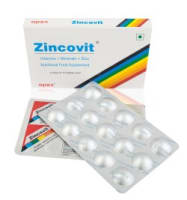NOTICE: unsafe with : Alcohol
USED FOR:
Allergic disorders
Cough with mucus
Pain relief
COMPOSITION:
Phenylpropanolamine (25mg)
Chlorpheniramine (2mg)
Guaifenesin (100mg)
Paracetamol (500mg)
Bromhexine (8mg)
Therapeutic Uses:
respiratory
pain analgesics

CAUTION
Taking Phenylpropanolamine+Chlorpheniramine+Guaifenesin+Paracetamol+Bromhexine with alcohol can cause liver damage.

WEIGH RISKS VS BENEFITS
Tussnil Tablet may be unsafe to use during pregnancy.Animal studies have shown adverse effects on the foetus, however, there are limited human studies. The benefits from use in pregnant women may be acceptable despite the risk. Please consult your doctor.

No information is available on the use of Tussnil Tablet during lactation. Please consult your doctor.

Tussnil Tablet may make you feel dizzy, sleepy, tired, or decrease alertness. If this happens, do not drive.

Tussnil Tablet is probably safe to use in patients with kidney disease. Limited data available suggests that dose adjustment of Tussnil Tablet may not be needed in these patients. Please consult your doctor.Use of Tussnil Tablet may cause excessive sleepiness in patients with end stage kidney disease.

CAUTION
Tussnil Tablet should be used with caution in patients with liver disease. Dose adjustment of Tussnil Tablet may be needed. Please consult your doctor.However, the use of Tussnil Tablet is not recommended in patients with severe liver disease and active liver disease.
Uses of Phenylpropanolamine
Phenylpropanolamine is used in the treatment of allergic disorders.
How to use Phenylpropanolamine
Take this medicine in the dose and duration as advised by your doctor. Swallow it as a whole. Do not chew, crush or break it. Tussnil Tablet may be taken with or without food, but it is better to take it at a fixed time.Take it with food if stomach upset occurs.Avoid Tussnil Tablet with caffeine and chocolate as well as food containing caffeine and chocolate such as tea leaves, cocoa beans.
How Tussnil Tablet works
Phenylpropanolamine belongs to a class of medications called nasal decongestants. It stimulates receptors on blood vessels in the nose and sinuses leading to its constriction and reduction in blood flow thereby relieving congestion..
Common Systemic hypertension (high blood pressure), Nausea, Insomnia (difficulty in sleeping), Palpitations.
Expert advice for Phenylpropanolamine
Do not continue phenylpropanolamine for more than 7 days if your condition does not improve or if you have high fever.
Tell your doctor if you have high blood pressure, heart problems, liver or kidney disease, diabetes, prostate enlargement or visual problems due to increased pressure in the eyes (glaucoma).
Seek immediate medical attention and discontinue medication if you experience difficulty in breathing, sudden swelling or skin reactions, fits, rapid heartbeat or hallucinations.
Use with caution if you are a woman or an elderly patient. Woman may be at a higher risk of haemorrhagic stroke (bleeding in the brain).
Avoid driving or operating machinery if you feel dizzy or drowsy after taking phenylpropanolamine.
Tell your doctor if you are or planning to become pregnant or are breastfeeding.
Do not take if allergic to phenylpropanolamine or any of its ingredients.
Q. Is phenylpropanolamine the same as phenylephrine?
Phenylpropanolamine and phenylephrine are different drugs belonging to the same class of medications (nasal decongestants). Both are used to relieve blocked nose or sinuses caused by common cold and seasonal nasal allergies (hay fever)
Q. Does Phenylpropanolamine cause stroke?
Phenylpropanolamine has shown to increase the risk of hemorrhagic stroke (bleeding in the brain). Women are at a higher risk.
Q. Is Phenylpropanolamine a controlled substance?
Phenylpropanolamine is a controlled substance since it can be used for manufacturing of illegal drugs
Q. Is Phenylpropanolamine still on the market?
Phenylpropanolamine is banned in India due to increased risk of haemorrhagic stroke (bleeding in the brain) and is no longer marketed in India
Uses of Chlorpheniramine
Chlorpheniramine is used in the treatment of allergic disorders.
How to use Chlorpheniramine
Take this medicine in the dose and duration as advised by your doctor. Swallow it as a whole. Do not chew, crush or break it. Tussnil Tablet may be taken with or without food, but it is better to take it at a fixed time.Take it with food if stomach upset occurs.Avoid Tussnil Tablet with caffeine and chocolate as well as food containing caffeine and chocolate such as tea leaves, cocoa beans.
How Tussnil Tablet works
Chlorpheniramine is an antihistaminic medication. It blocks the action of certain chemical messengers that are responsible for inflammation, congestion, itching, and other allergic reactions.
Common Sleepiness.
Expert advice for Chlorpheniramine
Avoid driving or operating dangerous machinery as it may decrease alertness. Avoid consuming alcohol when taking the Chlorpheniramine, as it may cause excessive sleepiness or drowsiness.
Q. Does chlorpheniramine or chlorpheniramine maleate cause increase in blood pressure/ drowsy/non drowsy/sedating/get you high/keep you awake/sleepiness/make you tired/weight gain?
Chlorpheniramine causing these side effects is common or rare. Always consult your doctor, if you experience any of these side effects
Q. Is chlorpheniramine like Benadryl?
No, chlorpheniramine is different from Benadryl
Q. Is chlorpheniramine prescription?
Yes, it is available with doctor’s prescription only
Q. Can I take chlorpheniramine or chlorpheniramine maleate with Panadol/ cetirizine /Zyrtec/ Allegra/ warfarin/ diphenhydramine/ ibuprofen/Claritin/guaifenesin/Benadryl?
Yes, but taking other medicines may alter the effects of chlorpheniramine. Always consult your doctor for the change of dose regimen or an alternative drug of choice that may strictly be required
Q. Does chlorpheniramine contain aspirin?
No, it does not contain aspirin in it. Chlorpheniramine is a different drug than aspirin.
Uses of Guaifenesin
Guaifenesin is used in the treatment of cough with mucus.
How to use Guaifenesin
Take this medicine in the dose and duration as advised by your doctor. Swallow it as a whole. Do not chew, crush or break it. Tussnil Tablet may be taken with or without food, but it is better to take it at a fixed time.Take it with food if stomach upset occurs.Avoid Tussnil Tablet with caffeine and chocolate as well as food containing caffeine and chocolate such as tea leaves, cocoa beans.
How Tussnil Tablet works
Guaifenesin works by decreasing the stickiness of mucus (phlegm) and helps in its removal from the airways.
Common Nausea, Itchy rash, Hypersensitivity reaction, Stomach pain, Diarrhoea, Vomiting.
Expert advice for Guaifenesin
Do not take guaifenesin if you have known allergy to it.
Stop guaifenesin and consult your doctor immediately if you develop breathing difficulty swelling on your face, neck throat or tongue (severe allergic reactions).
Do not take guaifenesin if you are taking more than one cough and cold medicine.
Consult your doctor before you start taking guaifenesin if you have asthma, inflammation of air passages (bronchitis), lung disorder in which the flow of air to the lungs is blocked (chronic obstructive pulmonary disease) such as emphysema, smokers cough, porphyria (a rare blood pigment disorder that affects skin and other organs).
Consult your doctor before you start guaifenesin if you are suffering from liver or kidney problems, or if you are taking alcohol.
Guaifenesin should not be combined with cough suppressants in the treatment of cough.
Consult your doctor if your symptoms worsen or do not improve within 7 days, tend to recur, or are accompanied by a fever, rash, or persistent headache.
It is important to tell your doctor, while undergoing urine tests, if have recently taken or are taking guaifenesin as it can affect some results.
Do not take guaifenesin if you are pregnant or breast feeding unless it is advised by your doctor.
Use within 4 weeks of opening the bottle; discard after 4 weeks of opening even if not used (consult your pharmacist for the procedure to dispose).
Q. What is Guaifenesin used for?
Guaifenesin is an expectorant, mainly used to relieve chest congestion by aiding the removal of mucus
Q. What is Ascoril+/Ascoril LS/ Ascorl D cough syrup?
Ascoril+ cough syrup contains terbutaline, while Ascorl LS contails levosalbutamol. In addition both syrups contain bromhexine and guaifenesin and are used to relieve cough due to acute and chronic inflammation of the airways (bronchitis) and other cough conditions.Ascoril D is a medicine for dry cough and it does not contain guaifenesin
Q. Is Ascoril+ an antibiotic?
No, Ascoril+ cough syrup contains terbutaline, bromhexine and guaifenesin. It does not contain any antibiotic
Q. Does Ascoril+/ Ascoril LS cause drowsiness?
No, terbutaline, levosalbutamol, bromhexine and guaifenesin do not cause any drowsiness. Hence, Ascoril+ or Ascoril LS syrup does not cause drowsiness
Q. How long can I take guaifenesin?
Consult your doctor for use more than 7 days
Q. Can I take guaifenesin if I have high blood pressure?
Guaifenesin should not be taken by individuals with high blood pressur
Q. Can I take guaifenesin with phenylephrine, ibuprofen, amoxicillin and paracetamol (acetaminophen)?
There are no known drug interactions between phenylephrine, ibuprofen, amoxicillin and paracetamol (acetaminophen) and guaifenesin. However, consult your doctor about all medications currently taken before starting and while on guaifenesin
Q. Can I take guaifenesin with Sudafed (pseudoephedrine-decongestant preparation) and Dayquil (OTC cold and cough preparation), Benadryl, benzonatate?
Guaifenesin can be taken with other cold and cough preparation including Sudafed, Dayquil, Benadryl and benzonatate . However, other formulations containing guaifenesin must be avoided to avoid a double dose. Also, guaifenesin should not be combined with cough suppressants in the treatment of cough since the combination would not be logical and you may be exposed to unnecessary side effects.
Uses of Capnyl Syrup
Capnyl Syrup is used in the treatment of common cold symptoms with fever.
Uses of Paracetamol
Paracetamol is used for pain relief and fever.It is used to relieve pain in conditions like headache, joint pain, muscle pain or dental pain.
How to use Capnyl Syrup
Take this medicine in the dose and duration as advised by your doctor. Check the label for directions before use. Measure it with a measuring cup and take it by mouth. Shake well before use. Capnyl Syrup may be taken with or without food, but it is better to take it at a fixed time.Take it with food if stomach upset occurs.
How to use Paracetamol
Take this medicine in the dose and duration as advised by your doctor. Swallow it as a whole. Do not chew, crush or break it. Tussnil Tablet may be taken with or without food, but it is better to take it at a fixed time.Take it with food if stomach upset occurs.Avoid Tussnil Tablet with caffeine and chocolate as well as food containing caffeine and chocolate such as tea leaves, cocoa beans.
How Capnyl Syrup works
Capnyl Syrup is a combination of four medicines: Chlorpheniramine, paracetamol and phenylephrine which relieve cold symptoms. Chlorpheniramine is an antiallergic which relieves allergy symptoms like runny nose, watery eyes and sneezing. Paracetamol is an analgesic (pain reliever) and antipyretic (fever reducer). It blocks the release of certain chemical messengers in the brain that are responsible for pain and fever. Phenylephrine is a nasal decongestant which narrows the small blood vessels providing relief from congestion or stuffiness in the nose.
How Tussnil Tablet works
Paracetamol is an analgesic (pain reliever) and antipyretic (fever reducer). It works by blocking the production of the chemical messengers (prostaglandins) that transmit pain signals and induce fever.
Common Nausea, Vomiting, Allergic reaction, Sleepiness, Headache.
Common Allergic reaction.
Expert advice for Paracetamol
Good for pain relief and fever but not effective in joint pain due to poor anti-inflammatory action. Starts working within one hour. Wait for at least 4 hours before taking the next dose. Present in many over-the-counter (OTC) and prescription medicines. Avoid taking more than one paracetamol product at a time to prevent overdose. Doses >4 g/day (2 g in alcoholics) may cause liver, kidney or heart problems. Discontinue Paracetamol and inform your doctor immediately if rash occurs. For children, measure the doses of liquid Paracetamol using the measuring cup instead of a teaspoon to avoid under or over-dosage. Avoid excess alcohol intake (>3 glasses/day) when taking Paracetamol as it may cause liver damage.
Q. Can I take Paracetamol with vitamin B complex?
Yes, Paracetamol can be taken with vitamin B-complex preparations. They have been used together in the treatment of acute and painful diseases affecting nerves like trigeminal neuralgias, post-operative pain, etc. Paracetamol helps to relieve pain and vitamin B-complex corrects the deficiency that might be causing your symptoms.
Q. Is Paracetamol use associated with Helicobacter pylori infection?
No, Paracetamol use is not associated with Helicobacter pylori infection. Painkiller drugs can increase the acid secretion in the stomach, aggravate the symptoms of this infection and the risk of stomach and the intestine ulcer. However, this risk is minimum with Paracetamol as compared to other pain killers.
Q. Can I take Paracetamol with fexofenadine?
Yes, Paracetamol can be taken safely with fexofenadine. No drug-drug interactions or any harmful effects have been reported. These are used together to treat the symptoms of cold, cough, flu or a sore-throat and other allergic or viral diseases. Fexofenadine helps to relieve sneezing, runny nose, itchy throat, or eyes and Paracetamol helps to relieve pain or fever.
Q. Can I take Paracetamol with warfarin?
Paracetamol is safe to use occasionally with warfarin as other painkillers like ibuprofen and aspirin can increase the risk of bleeding. However, on a long-term use, Paracetamol can also increase the risk of bleeding. Talk to your doctor before taking them together as you may need to be monitored regularly.
Q. Can I take Paracetamol with tamsulosin?
Paracetamol can be taken with Tamsulosin. No harmful side effects or other interactions have been seen when they are taken together. Tamsulosin is an alpha adrenergic receptor blocker used to treat symptoms of benign prostatic hyperplasia.
Q. Can I take Paracetamol with cetirizine?
Yes, Paracetamol can be taken safely with cetirizine. No drug-drug interactions or any harmful effects have been reported. These are used together to treat the symptoms of cold, cough, flu or a sore throat and other allergic or viral diseases. Cetirizine helps to relieve sneezing, runny nose, itchy throat, or eyes and Paracetamol helps to relieve pain or fever.
Q. Can I take Paracetamol with ibuprofen?
Yes, Paracetamol can be taken with ibuprofen. Both help to relieve pain and fever and ibuprofen also decreases inflammation and swelling. However, both increase the acid secretion in the stomach and can cause acid reflux, heartburn, stomach, and intestinal ulcers and gut bleeding on long-term use.
Q. Does Paracetamol cause weight loss?
Paracetamol is not known to cause weight loss. It is a very safe medicine for short term use and can cause minor and rare side effects like low blood pressure, and allergic reactions.
Q. Can anyone be allergic to Paracetamol?
Yes, there have been reports of hypersensitivity and allergic reaction with the use of Paracetamol. Symptoms of an allergy include swelling of the face, mouth, and throat, shortness of breath, urticaria, red rash, and severe itching. Stop taking Paracetamol if you have such symptoms and immediately consult your doctor.
Q. How beneficial is to use Paracetamol with diclofenac?
Paracetamol and Diclofenac might be given together in case of fever and pain. Paracetamol has an early onset of action and it helps in relieving the symptoms till diclofenac starts working. However, both are pain killers and can affect stomach lining on long-term use leading to acid reflux, heartburn, and stomach ulcers and bleeding.
Q. Can I take Paracetamol for stomach pain?
No, Paracetamol should not be taken for stomach pain. You must consult your physician for this. The stomach pain could be due to some underlying condition, which needs attention.
Q. Can I take Paracetamol with aceclofenac?
Yes, Paracetamol can be given with aceclofenac for fever and pain. Paracetamol has an early onset of action and it helps in relieving the symptoms till Aceclofenac starts working. However, both are pain killers and can affect stomach lining on long-term use leading to acid reflux, heartburn, and stomach ulcers and bleeding.
Q. Does Paracetamol treat sore-throat, flu or cold?
Paracetamol does not treat sore-throat, flu or cold but it can help in relieving fever and body aches associated with these conditions.
Q. Can I take Paracetamol with codeine?
Paracetamol and codeine can be taken together. No drug-drug interactions or any harmful effects have been reported when they are used together. They are commonly given together for the relief of mild to moderate pain due to different reasons.
Q. Does Paracetamol help a cough?
No, Paracetamol does not help in the relief of cough but it can help in relieving associated fever and body aches.
Q. Does Paracetamol contain alcohol?
No, Paracetamol does not contain any alcohol.
Q. Can I take Paracetamol with amoxicillin?
Paracetamol and amoxicillin can be taken together. Amoxicillin is an antibiotic and is used to treat bacterial infections. Paracetamol is given along, for the relief of any associated pain and fever. No drug-drug interactions or any harmful effects have been reported when they are used together.
Q. Does Paracetamol have side effects?
Paracetamol is quite safe for short term use. It has side effects if taken in more than the dose advised and for a long-term. Immediately consult a doctor if there is nausea, stomach pain, loss of appetite, dark colored urine, clay colored stools or jaundice as it could be due to an overdose of Paracetamol.
Q. Is Paracetamol safe to use?
Paracetamol is safe to use in the dose as advised by the doctor. Use in more than recommended doses can do serious harm.
Q. Is it safe to take Paracetamol with erythromycin?
Paracetamol and Erythromycin can be taken together. Erythromycin is an antibiotic and is used to treat bacterial infections. Paracetamol is given along, for the relief of associated fever. No drug-drug interactions or any harmful effects have been reported when they are used together.
Q. Is Paracetamol an antibiotic?
Paracetamol is not an antibiotic. It's an analgesic (pain-killer) and antipyretic (for the relief of fever), whereas an antibiotic is useful for the treatment of infections.
Q. Can I take Paracetamol with metronidazole?
Paracetamol and Metronidazole can be taken together. No drug-drug interactions or any harmful effects have been reported when used together.
Q. Can I take Paracetamol with homeopathic medicine?
Ask your doctor before taking Paracetamol with homeopathic medicine as there is no information available on this.
Q. Is it safe to take Paracetamol with Tramadol?
Yes, Paracetamol can be taken with Tramadol. They are used together for moderate to severe pain in various diseases and their use is associated with common side effects like nausea, dizziness, and sleepiness.No drug-drug interactions have been reported when they are used together.
Q. Can I take Paracetamol with Azithromycin?
Paracetamol and Azithromycin can be taken together. Azithromycin is an antibiotic and is used to treat bacterial infections. Paracetamol is given along, for the relief of any associated pain and fever. No drug-drug interactions or any harmful effects have been reported when they are used together.
Q. Is it safe to take Paracetamol with Naproxen?
Yes, Paracetamol can be taken with Naproxen. Both are painkillers and belong to the group of non-steroidal anti-inflammatory drugs (NSAIDs) and are used to relieve pain and fever. However, long-term use affects the stomach lining and increase acid secretion which can lead to side effects like acid reflux, heartburn, stomach, and intestinal ulcers and bleeding.
Q. Can a patient with high blood pressure take Paracetamol?
Occasional use of Paracetamol is safe in patients with high blood pressure. However, if it is to be taken for a long time, you must talk to your doctor. Paracetamol belongs to the group of painkillers called analgesics and antipyretics and these drugs can decrease the action of medicines taken by the patient for control of high blood pressure.
Q. Does Paracetamol interact with vitamin C?
Vitamin C can be taken with Paracetamol. However, vitamin C increases the blood levels of other drugs similar to Paracetamol, so it is advised to talk to your doctor if you have to take both these medicines for a long-term.
Q. What happens if you take an overdose of Paracetamol?
Overdose of Paracetamol can cause potentially life-threatening liver damage, which is the most serious side effect. Early symptoms may include nausea, vomiting, profuse sweating, and general tiredness. Kidney damage, decreased platelet count and coma may also occur. Immediately consult a doctor or consult an emergency in the case of suspected overdosage.
Q. Can I take Paracetamol with hyoscine?
Yes, Paracetamol and hyoscine can be taken together. Hyoscine is used to relieve pain and cramps of the stomach, gut, urinary bladder and urinary tract while Paracetamol is used to relieve mild to moderate pain of a headache, toothache, muscle pain, joint pain, and fever. Together they can be advised by a doctor for painful conditions of the gut and urinary tract.
Q. Can I take Paracetamol with Betahistine?
Paracetamol can be taken with Betahistine. There are no reported drug-drug interactions or harmful effects when they are used together.
Q. Can I take Paracetamol with rabeprazole?
Paracetamol and Rabeprazole can be taken together. Rabeprazole is used to prevent Paracetamol (painkillers) induced gastritis and stomach ulcers by decreasing the production of acid in the stomach. There are no clinically significant drug-drug interactions or harmful effects seen when they are used together.
Q. How beneficial is to take urofollitropin alpha with Paracetamol?
Urofollitropin alpha is given as a subcutaneous injection with the human chorionic gonadotropin (hCG) hormone to assist in ovulation and fertility. Urofollitropin alpha can cause abdominal or pelvic pain or pain and swelling at the injection site in some patients which can be relieved by taking Paracetamol.
Q. Can vitamin D be taken safely with Paracetamol?
Yes, vitamin D can be taken with Paracetamol. Patients with osteoarthritis who are on vitamin D and calcium may need to take Paracetamol for the relief of any associated pain. No drug-drug interactions or any harmful effects have been reported.
Q. Can I take clindamycin with Paracetamol?
Paracetamol and Clindamycin can be taken together. Clindamycin is an antibiotic and is used to treat bacterial infections. Paracetamol may be given along, for the relief of associated fever. No drug-drug interactions have been reported clinically. However, both are known to cause liver damage. Talk to your doctor if you need them for a long time.
Q. Does Paracetamol affect the liver?
Use of Paracetamol for a long time and above recommended doses can cause liver damage ranging from abnormal liver tests to liver failure. If you are taking Paracetamol from a long time and have nausea, stomach pain, loss of appetite, dark colored urine, clay colored stools or jaundice, inform your doctor as these could be signs of an underlying liver damage.
Q. Can I take Paracetamol if I have hepatitis?
Paracetamol is considered the safest painkiller to take for people with hepatitis for mild to moderate pain and fever. However, Paracetamol is metabolized in the liver, so, consult your doctor before taking Paracetamol if you have hepatitis as it can cause liver damage if taken in higher doses or for a very long time.
Q. What are the serious side effects of taking excess Paracetamol?
Potentially severe life-threatening liver injury is a serious side effect seen with an overdose of Paracetamol. Overdose can also cause kidney injury, coma, and decreased platelet count. Early symptoms of an overdose include nausea, vomiting, and general tiredness. Immediately consult a doctor or reach an emergency in case of suspected overdose.
Uses of Bromhexine
Bromhexine is used in the treatment of cough.
How to use Bromhexine
Take this medicine in the dose and duration as advised by your doctor. Swallow it as a whole. Do not chew, crush or break it. Tussnil Tablet may be taken with or without food, but it is better to take it at a fixed time.Take it with food if stomach upset occurs.Avoid Tussnil Tablet with caffeine and chocolate as well as food containing caffeine and chocolate such as tea leaves, cocoa beans.
How Tussnil Tablet works
Bromhexine thins and loosens mucus (phlegm), making it easier to cough out.
Common Irritation of ear, Allergic skin rash, Dizziness, Headache.
Expert advice for Bromhexine
Tell your doctor if you have ever had or are suffering from stomach ulcer. You may not be prescribed Bromhexine as it can aggravate your problem.
Inform your doctor if you have any liver/kidney disease or asthma.
Tell your doctor if you are pregnant, planning to become pregnant or are breastfeeding.
Do not take if allergic to Bromhexine or any of its ingredients.
Q. Is Bromhexine an antihistamine?
No, Bromhexineis not an antihistamine.


 Tussnil Tablet
Tussnil Tablet  Bookmark
Bookmark





















